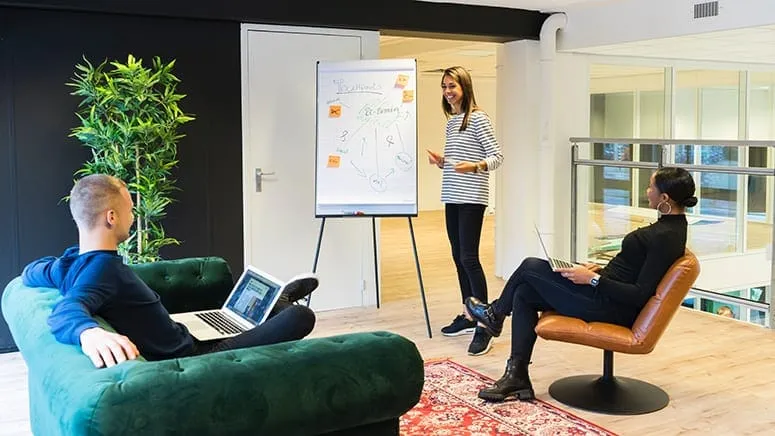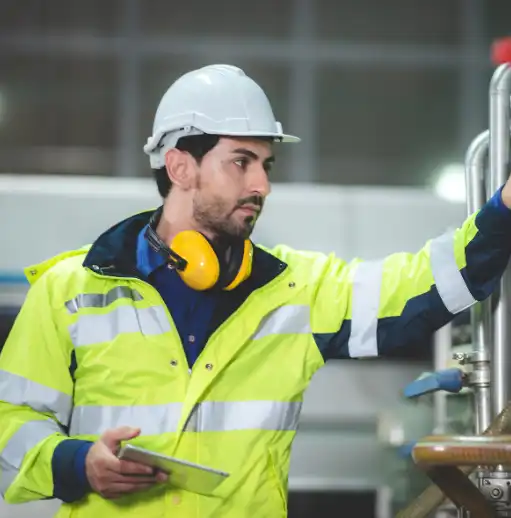
Revisiting space planning is important for evolving companies. As your employees’ needs change, the workspaces they use will need to change. It’s also worthwhile to reevaluate space allocation if you haven’t done so in a few years — the types of workspaces present are likely outdated or, at the very least, due for a few upgrades. It’s an excellent time to ask yourself if there’s enough available breakout space.
Offices have informally utilized breakout spaces for decades. Today, they’ve risen from convenience to necessity based on their role in agile workplaces. Not only do you need to provide breakout spaces, but you must ensure these areas support various types of work. It’s time to reevaluate the role breakout spaces play in your office.
Defining breakout spaces
What is breakout space? The simplest definition is any space without a predetermined purpose. It could be a table with three or four chairs or as complex as an experiential space employees can flex in and out of.
Breakout spaces are a quick fix to an immediate need. A conference ends, but three people need to get together to discuss a subtask. Instead of crowding around someone’s desk, they “break out” into a space for 15 to 20 minutes. An employee has two meetings on the fourth floor, with a 30-minute break between them. Instead of returning to their office on the first floor, they flex into a breakout space to prep between meetings.

Breakout spaces are the ultimate representation of agility in a fast-paced workplace. They’re usually occupied for around 30 to 45 minutes, and their unstructured nature turns them into the ideal space for whoever occupies them.
Give employees diverse breakout spaces
Breakout spaces themselves don’t generally follow a defined purpose. However, a breakout area can set the tone for the type of work people do in these spaces.
A breakout area tucked into a quiet corner might attract employees looking for a hideaway — a place to concentrate on something important for a short time. Likewise, an experiential breakout area themed like a coffee house might encourage collaboration by attracting small groups who need a place to brainstorm or toss around ideas.
The atmosphere of a breakout space should signal to employees the type of environment they can expect to work in. Creating diverse breakout spaces throughout your facilities is a great way to give employees flex space that meets their changing needs. Quiet work today, collaboration tools tomorrow, and space to spread out next week. The more diverse breakout spaces, the easier employees can move seamlessly throughout the workplace as their day or workload dictates.
Unstructured space is crucial in agile offices
The role of an office breakout area cannot be understated in the modern workplace. Employees in motion need spaces to hunker down, whether to catch their breath, catch up on messages, or accomplish quick tasks. An undiscerning, easily co-opted breakout space is the ideal opportunity. Create the right ambiance via space design, and it becomes a haven for employees — a space where they feel comfortable and grounded, despite their fast-paced schedule.

Today, so much of the office is structured to promote agility specifically. While the workplace experience is flexible on the surface, there are rigid controls in place that allow it to bend without breaking. Facility managers play an invaluable role, and the rise of office automation makes overseeing dynamic environments easier.
Unstructured workspaces are an essential asset on the management side, as well. These “set it and forget it” spaces don’t need management because they’re truly agile. Well-conceived, they’re a smart way to both support the workforce and optimize the office space floor plan.
Making breakout space work
Breakout spaces are the most flexible spaces in the office, but that shouldn’t make them an afterthought or a filler solution in your floor plan. Dedicated breakout space should be strategic — located in areas where it’s easy for people to transition into and out of different activities. Employees should feel comfortable in a breakout space, whether doing head-down work or meeting with a small group. Most importantly, it must foster productivity by contributing to greater workplace concepts of agility and flexibility.
Employees have always used breakout spaces. Now, in the modern office, their role has expanded. Put these adaptable, accessible spaces where they’ll do the most good and encourage employees to leverage them whenever they need a place to be productive.








